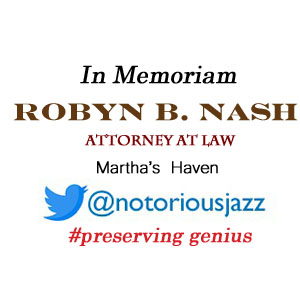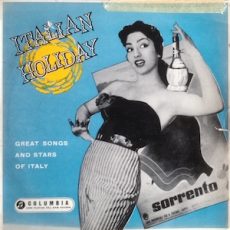
Daily Dose Of Jazz…
Andrea Ventriglia was born in Capua, Italy on April 29, 1953 and studied the saxophone with the masters Franco Florio in Salerno and Eraclio Sallustio at the GB Martini Conservatory in Bologna, Italy. He later studied the flute with Aldo Ferrantini.
His professional career began while he was still a music student around the end of the 1960s, following the rhythm & blues and soul of James Brown, Wilson Pickett, Aretha Franklin, Ray Charles and Joe Cocker in fashion at that time and still today. At a very young age he was part of the best and
As a soldier Andrea was part of the National Band of the Italian Army. He moved to Verona, Italy in the mid 1970s and began playing in small bands in night clubs. He was invited to join the Big Band Citta’ di Verona directed by Maestro Mario Pezzotta, in the first tenor saxophone. At the same time he performed in Fernando Brusco’s small orchestra as an arranger and saxophonist.
Moving to the United States he initially played in small bands that performed on cruise ships where he met among others Count Basie, Mercer Ellington, Sarah Vaughan, Harry James and Bob Crosby. Settling first in San Francisco, then in Los Angeles, California he played on the road with small bands collaborating with Harry James and Bob Crosby in the latter city.
Back in Italy he gained membership into Franco Rosselli’s orchestra and did the night club circuit in Florence, San Remo and Riviera Romagnola. Leaving Roselli he toured with Bobby Solo throughout Italy. His passion for jazz and big band led him to the Luciano Fineschi Orchestra, again sitting in the first tenor saxophone and flute chair.
After the orchestra disbanded Ventriglia went on to play in other big bands, duos, artistic partnerships, and guest appearances. For a decade he was a professor of saxophone at the Giuseppe Martucci Music High School in his hometown. He trained musicians currently working with famous artists or with their own groups and some of whom practice the profession of musician in the USA.
By the Eighties the public became more sensitive towards jazz, so Andrea led quartets performing in various Italian jazz clubs. that sprung up a bit everywhere in Italy. During his career and for professional reasons, saxophonist and flutist Andrea Ventriglia has performed on nearly every continent and continues to perform, tour and record.
More Posts: bandleader,flute,history,instrumental,jazz,music,saxophone
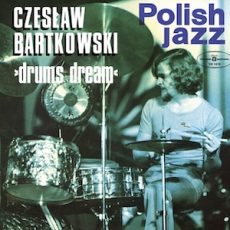
Daily Dose Of Jazz…
Czesław Kazimierz Bartkowski was born April 19, 1943 in Łódź, Poland. He has been involved in music since he was six years old. He graduated from the Secondary Music School in Wrocław, Poland in percussion class. He made his official debut in 1960 as a drummer in Jerzy Pakulski’s Far Quartet.
In 1963 he started working with Zbigniew Namysłowski Quartet and also played with Czesław Niemen’s Niemen Enigmatic, and Michał Urbaniak’s Grupa .
He has played in a variety of trios with pianists Adam Makowicz, Wojciech Karolak, Artur Dutkiewicz, Andrzej Jagodziński, tenor saxophonist Tomasz Szukalski, guitarist Marek Bliziński, trumpeter Tomasz Stańko, and double bassists Andrzej Cudzich, Zbigniew Wegehaupt, Adam Cegielski.
Moreover, he took part in the recording of such singers as Ewa Bem, Urszula Dudziak and Stanisław Sojka, and American musicians Freddie Hubbard, Clark Terry, Joe Newman, Art Farmer, Ben Webster, and the Polish band Novi Singers.
He has collaborated with the Polish Radio Jazz Studio and with Sławomir Kulpowicz’s Mainstream and InFormation bands. He has performed in Poland, India, United States, New Zealand, Australia and numerous European countries. He has been a lecturer and participated in jazz workshops.
Drummer and teacher Czesław Bartkowski continues to perform, record and educate..
More Posts: bandleader,drums,history,instrumental,jazz,music
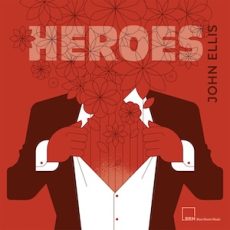
Daily Dose Of Jazz…
John Axson Ellis was born on April 13, 1974 in North Carolina and learned clarinet and piano as a child. During the Nineties in New Orleans, Louisiana he studied with Ellis Marsalis and performed with Brian Blade and Nicholas Payton.
Independently releasing his debut album Language of Love in 1996, he went on to receive a music degree from the New School in New York City and won second place in the 2002 Thelonius Monk Institute of Jazz International Saxophone Competition. John traveled to Africa as a cultural ambassador for the United States Information Agency.
With playwright Andy Bragen, Ellis composed the theatrical works Dreamscapes, The Ice Siren, and Mobro. An album version of The Ice Siren with Gretchen Parlato on vocals was released in 2020.
Ellis has performed with the group Doublewide with Jason Marsalis, The Holmes Brothers, John Patitucci, and Miguel Zenón. He has recorded thirty-seven as a sideman with Charlie Hunter, Anne Mette Iversen, Kat Edmonson, Kendrick Scott, Ben Sidran, Lonnie Smith, Darcy James Argue, Will Bernard, Laila Biali, Erin Bode, Sean Costello, Caramelos de Cianuro, Gilfema, Robert Glasper, Jon Gordon, Norah Jones, Kathy Kosins, Michael Leonhart, Mike Moreno, Igor Lumpert, Eric Revis, Robert Sadin, Kate Schutt, Leo Sidran, Edward Simon, Sting, and Helen Sung.
Tenor saxophonist John Ellis, who recorded nine albums as a leader or co-leader, continues to perform, record and tour.
More Posts: bandleader,history,instrumental,jazz,music,saxophone
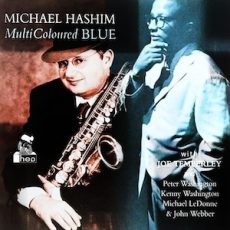
Daily Dose Of Jazz…
Michael James Hashim was born on April 9, 1956 in Geneva, New York. He began playing saxophone while in elementary school, then played with Phil Flanigan and Chris Flory as a high schooler. He worked with both into the middle 1970s.
In 1976 he toured with Muddy Waters and played with the Widespread Depression Orchestra, which he would later lead. Michael formed his own quartet in 1979, which has included Dennis Irwin, Kenny Washington, and Mike LeDonne as sidemen. In 1980 he toured with Clarence Gatemouth Brown.
Hashim played in New York City in the early 1980s with Roy Eldridge, Jo Jones, Brooks Kerr, Sonny Greer, and Jimmie Rowles. From 1987 he worked often with Judy Carmichael. The Nineties saw him touring China in 1992, and was one of the first jazz musicians ever to do so.
He worked with Flory through the 1990s, and toured North America and Europe regularly. In 1990 with his quartet he recorded Lotus Blossom, an album of Billy Strayhorn songs. In 1998 expanded this ensemble into 11 members as the Billy Strayhorn Orchestra.
Alto and soprano saxophonist Michael Hashim has been a member of the Raymond Scott Orchestra, a mainstay in the George Gee Orchestra, performs with The Microscopic Septet and continues to record as a leader and sideman..
More Posts: history,instrumental,jazz,music,saxophone

Daily Dose Of Jazz…
Harvey Wainapel was born in Ellenville, New York on March 31, 1951. Growing up in the small town in the Catskills, he started his musical journey on clarinet at the age of eight. By high school he discovered jazz by playing along with tunes on New York City radio stations. Longing to play saxophone he didn’t get his first horn, an alto, until his freshman year at the University of Pennsylvania. Working at the college radio station, he discovered the music of Cannonball Adderley, John Coltrane and Joe Henderson.
Initially intending to follow the family tradition of pursuing a career in medicine or science, he ended up taking the plunge into music at Berklee in 1971. It was a heady era, and Wainapel played with fellow students, guitarist John Scofield, pianist Kenny Werner, trumpeter Claudio Roditi, and tenor saxophonist Joe Lovano.
During his Boston years Harvey recorded and performed in Carnegie Hall with vibraphonist Gary Burton. After two years at Berklee he toured Tunisia with drummer Jamey Haddad, and made the trip to North Africa. Settling in Amsterdam, Netherlands he made a living before moving to Frankfurt, Germany with the HR Radio Big Band.
By 1979 he returned stateside, landing in New York City, and became enamored with Brazilian music. He quickly landed a gig playing with Thiago de Melo, alongside drummer Duduka da Fonseca, trumpeter Roditi and pianist Marcos Silva, the latter turning Wainapel on to other Brazilian artists. Not cut out for the city, he relocated to the San Francisco Bay Area, after a year on the road with Ray Charles. He became one of the most in-de-mand players in the region while keeping his European presence. Back at home, Wainapel can often be found playing Brazilian music, performing with Rio-born vocal improviser Claudia Villela.
Saxophonist and clarinetist Harvey Wainapel, who debuted as a leader with 1994’s At Home/On the Road, leads his own post-bop combos, freelances extensively, and performs with Beth Custer’s Clarinet Thing.
More Posts: bandleader,clarinet,history,instrumental,jazz,music,saxophone


